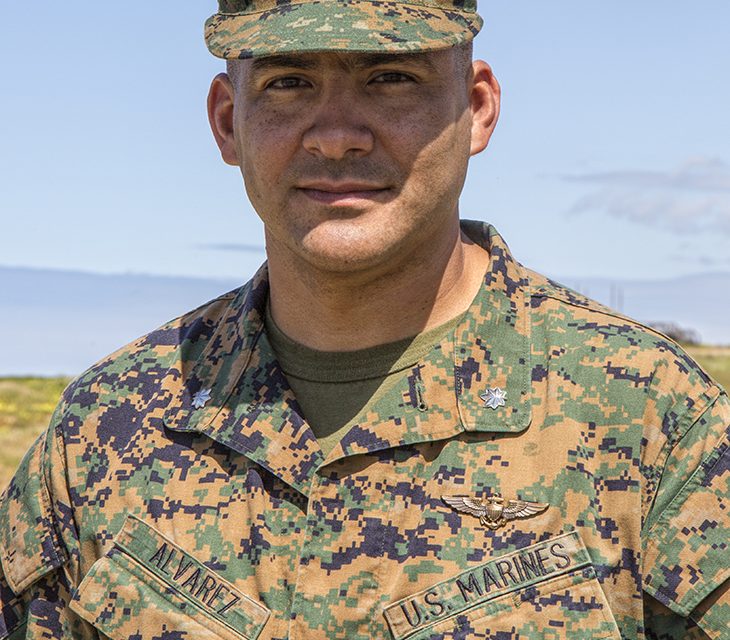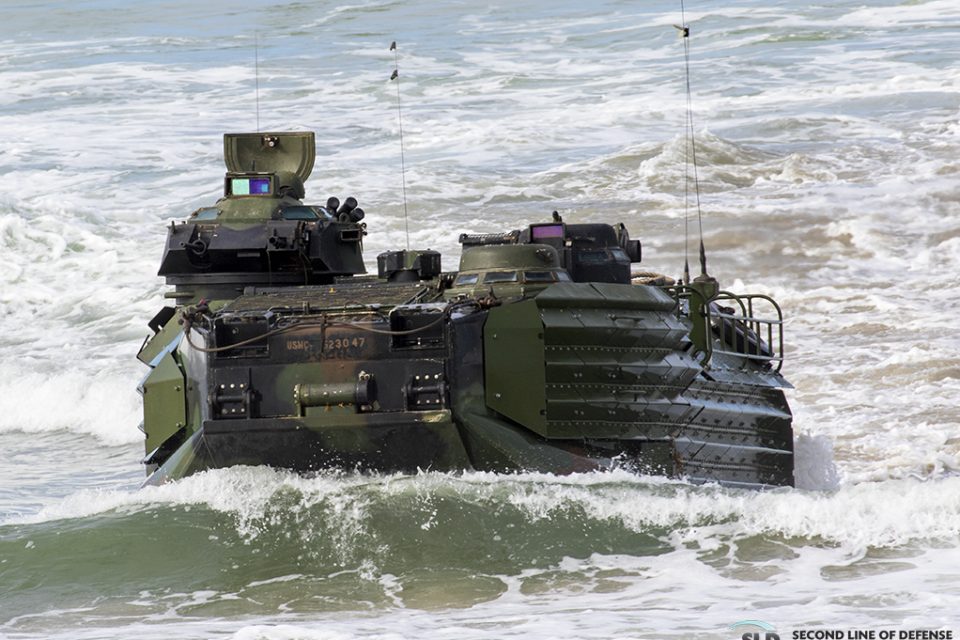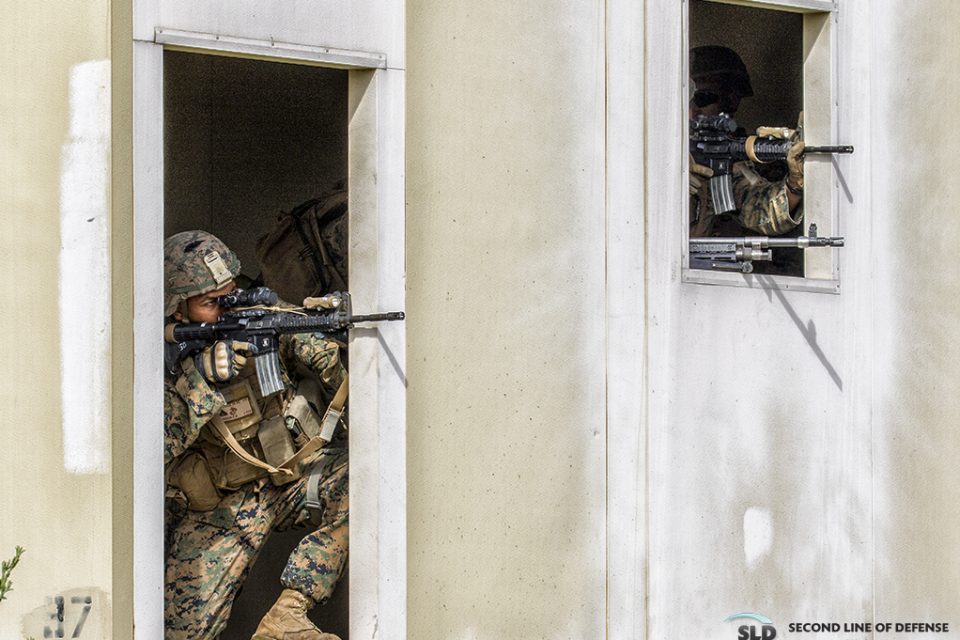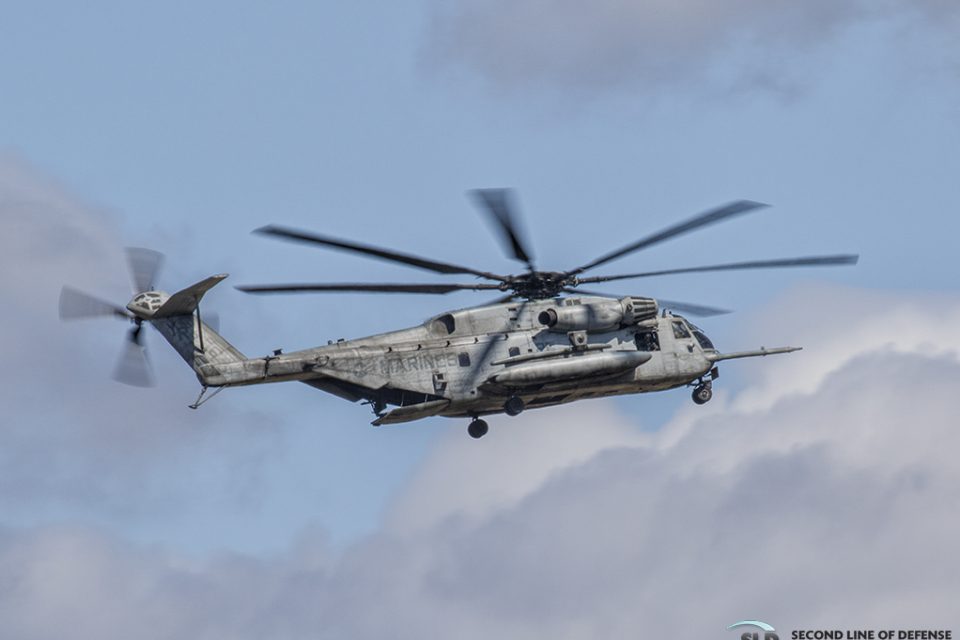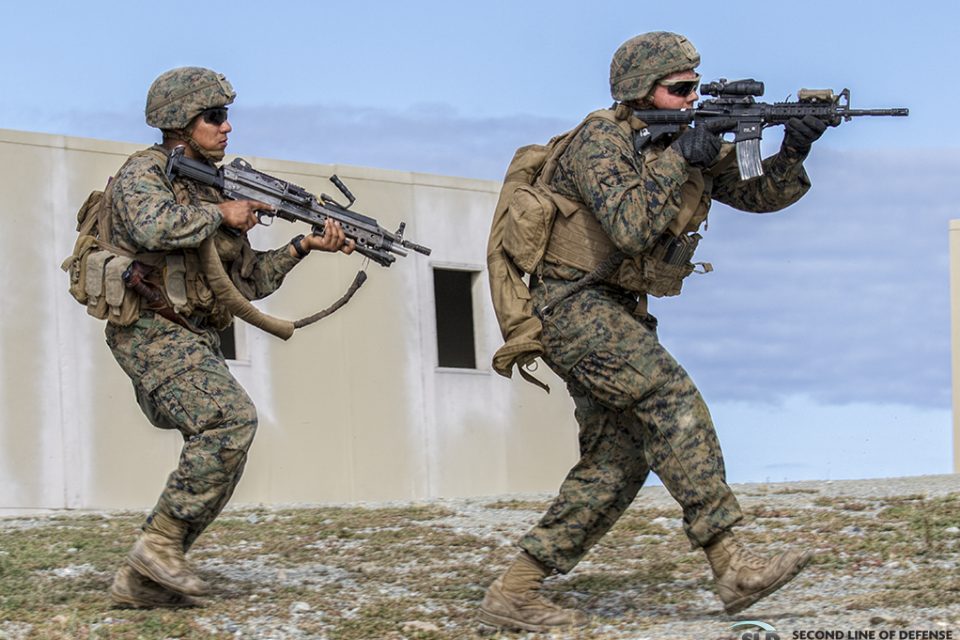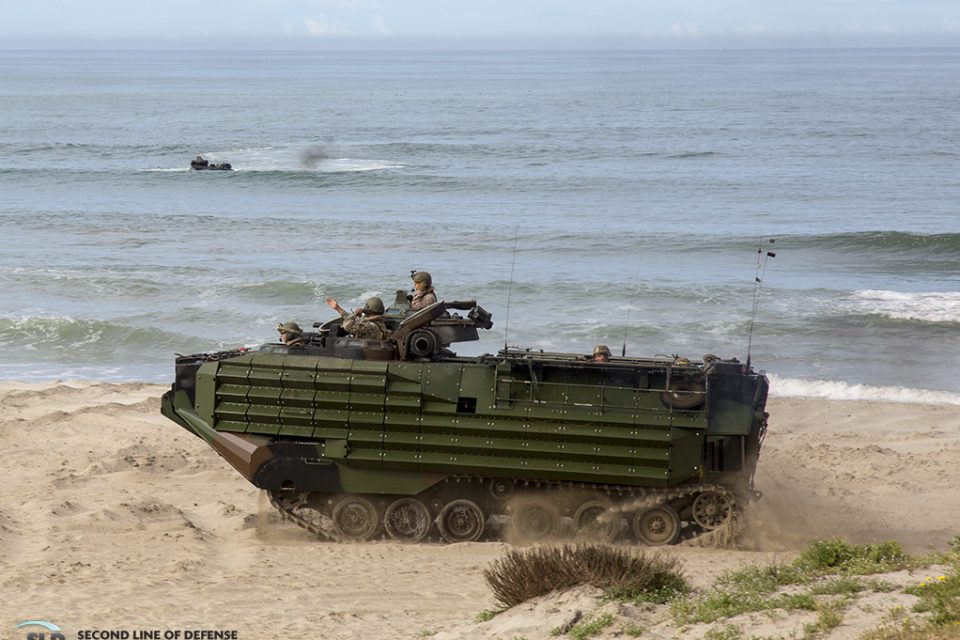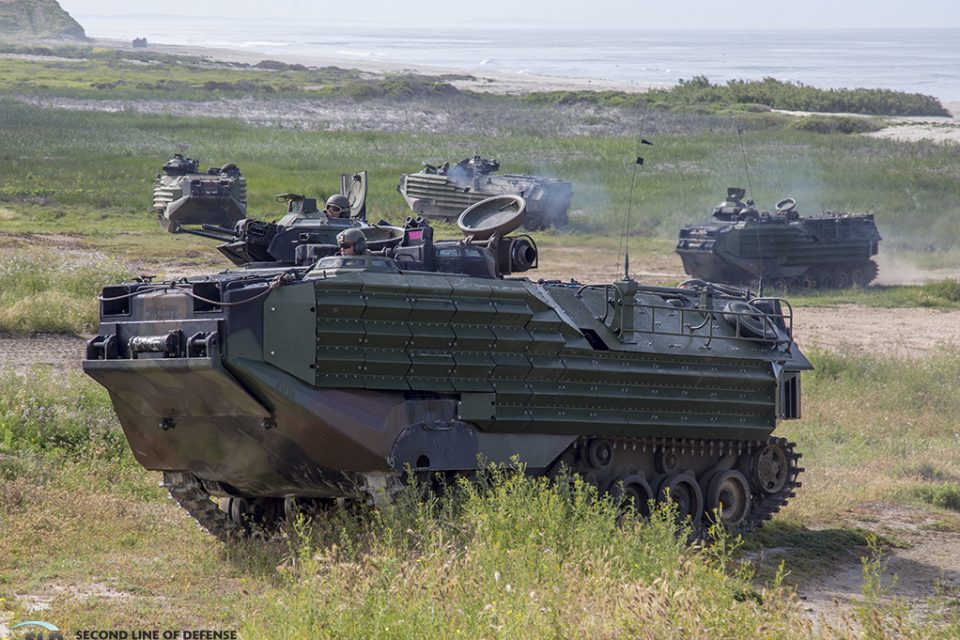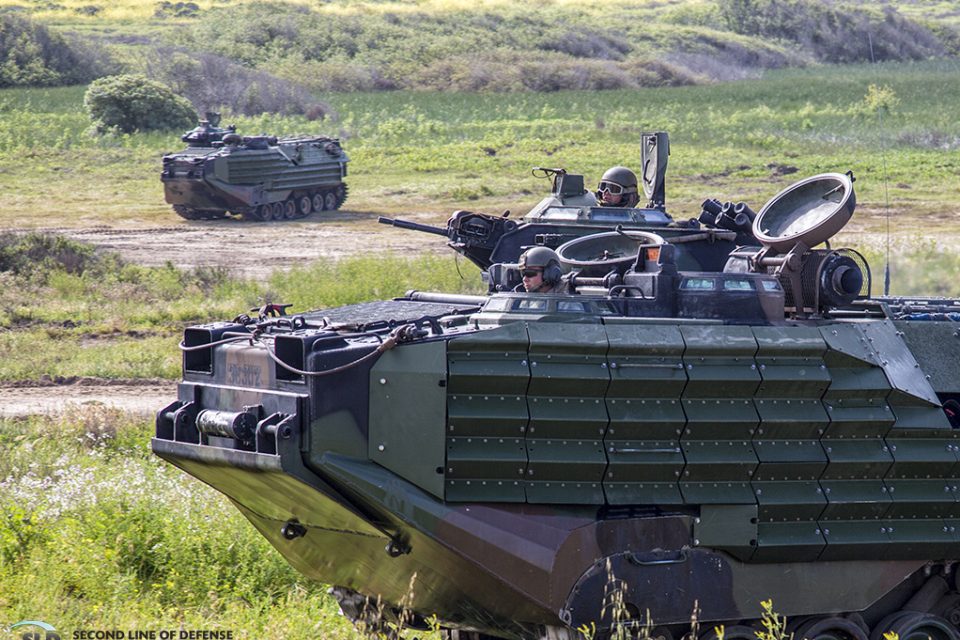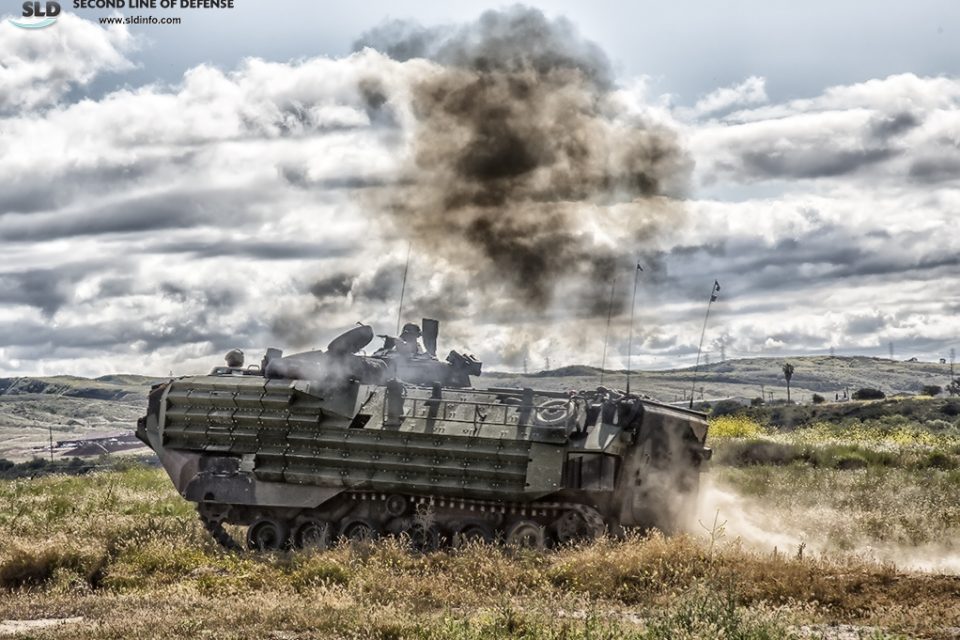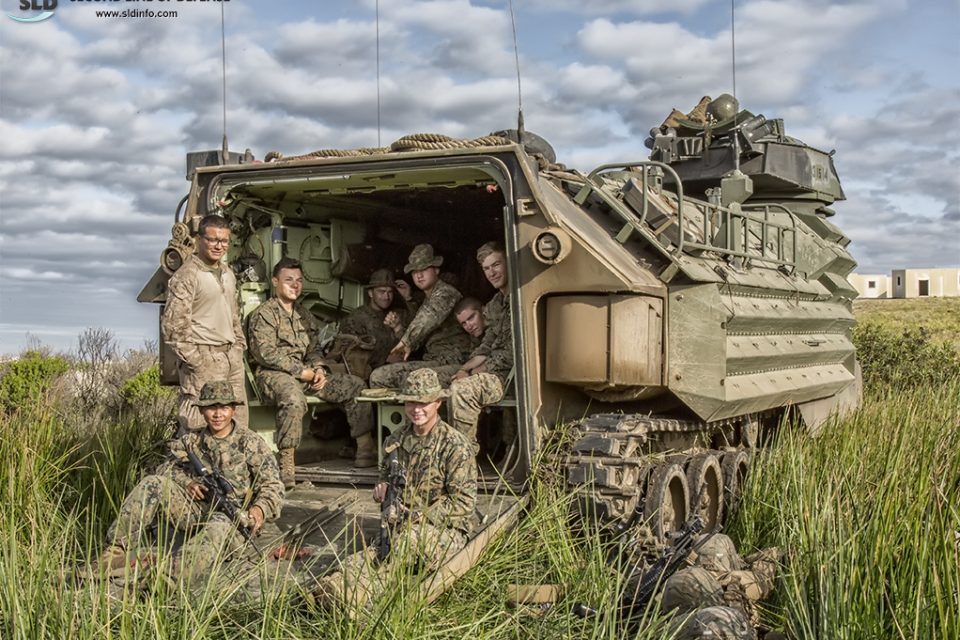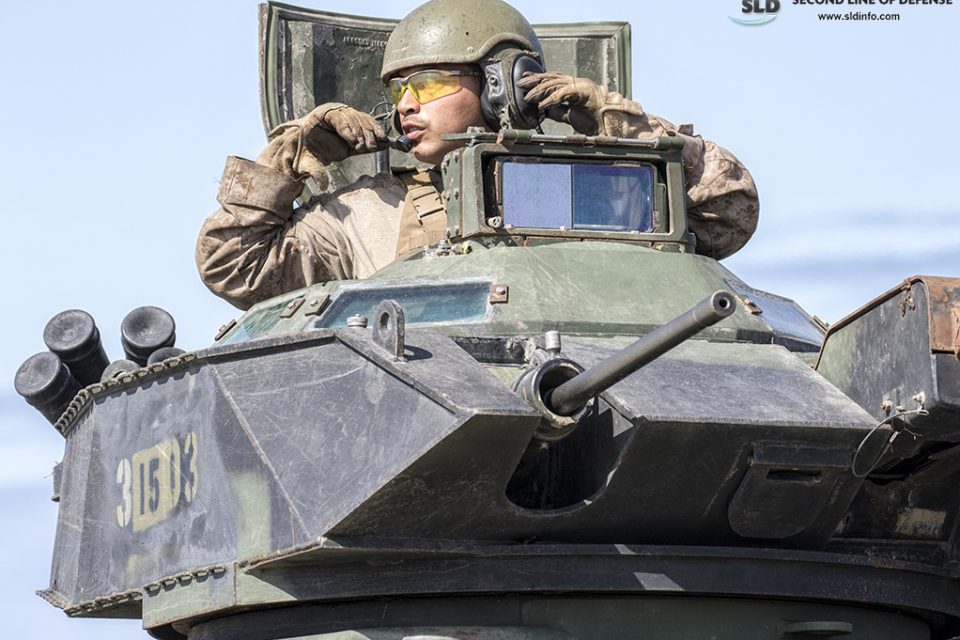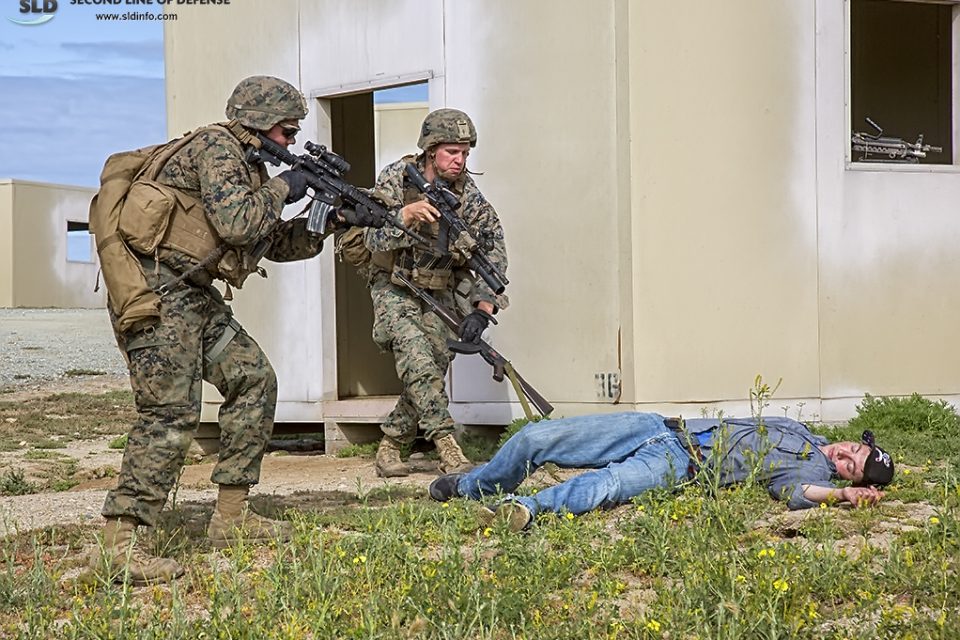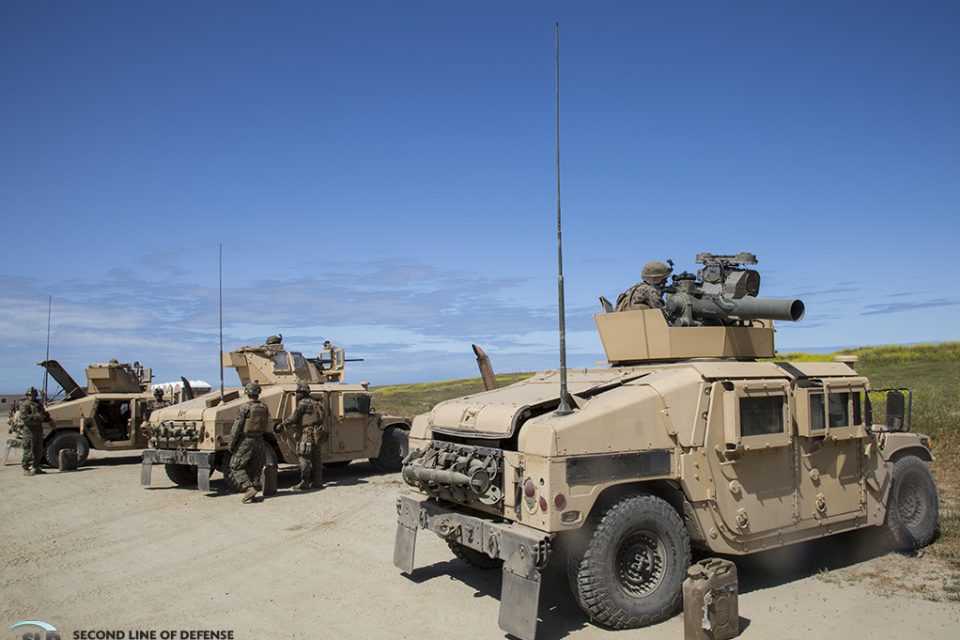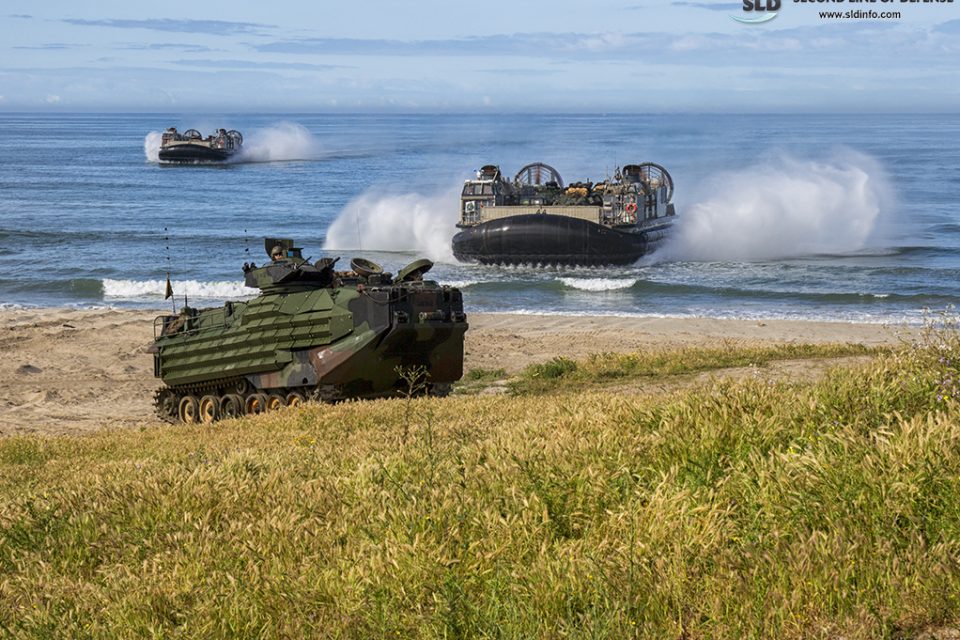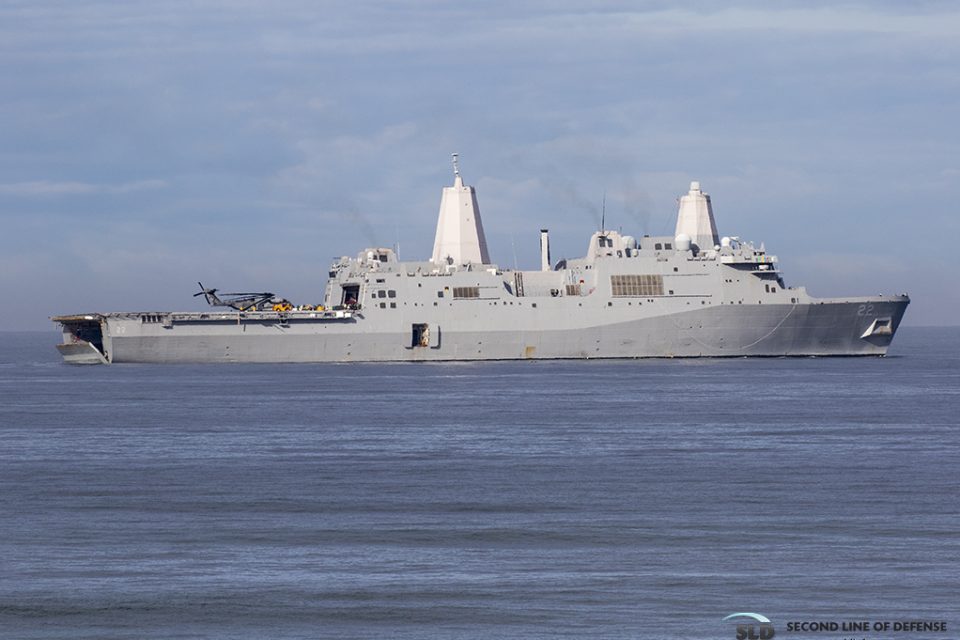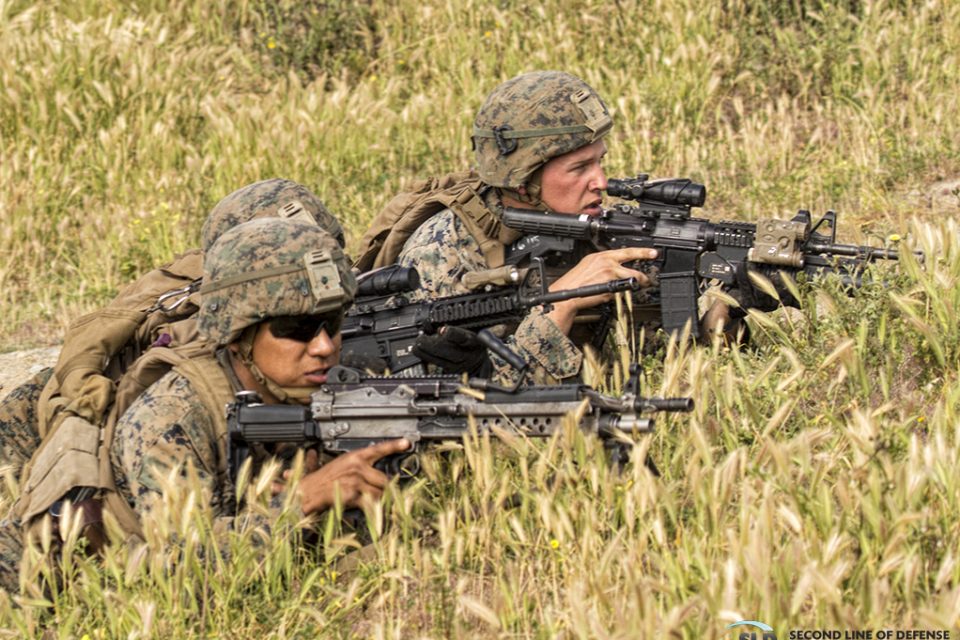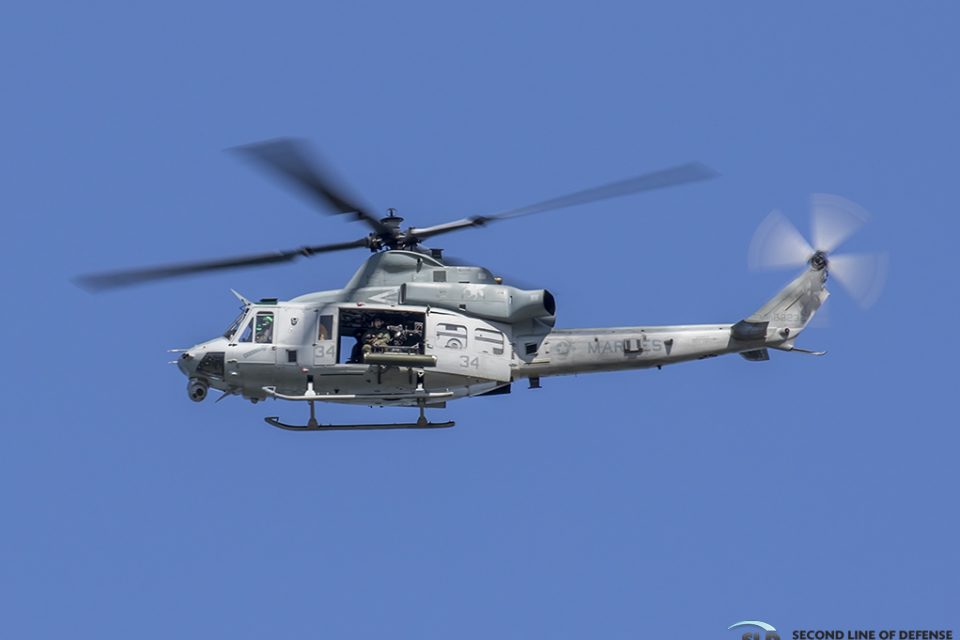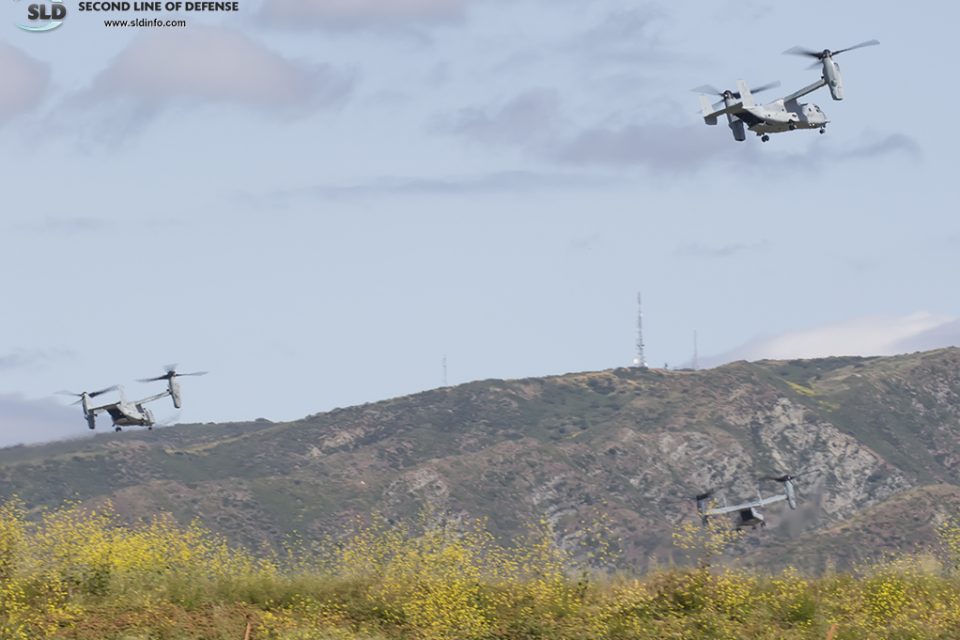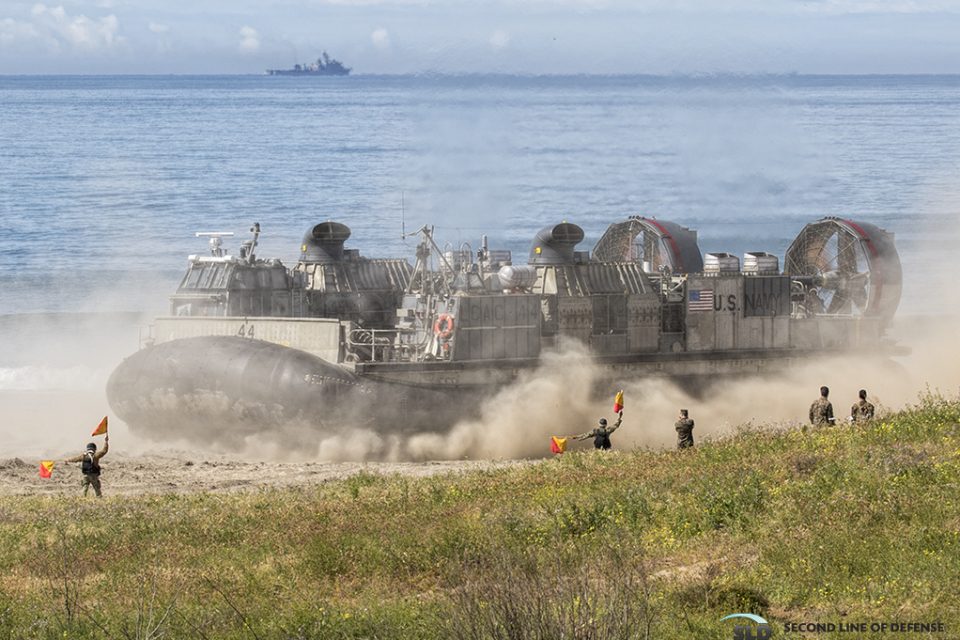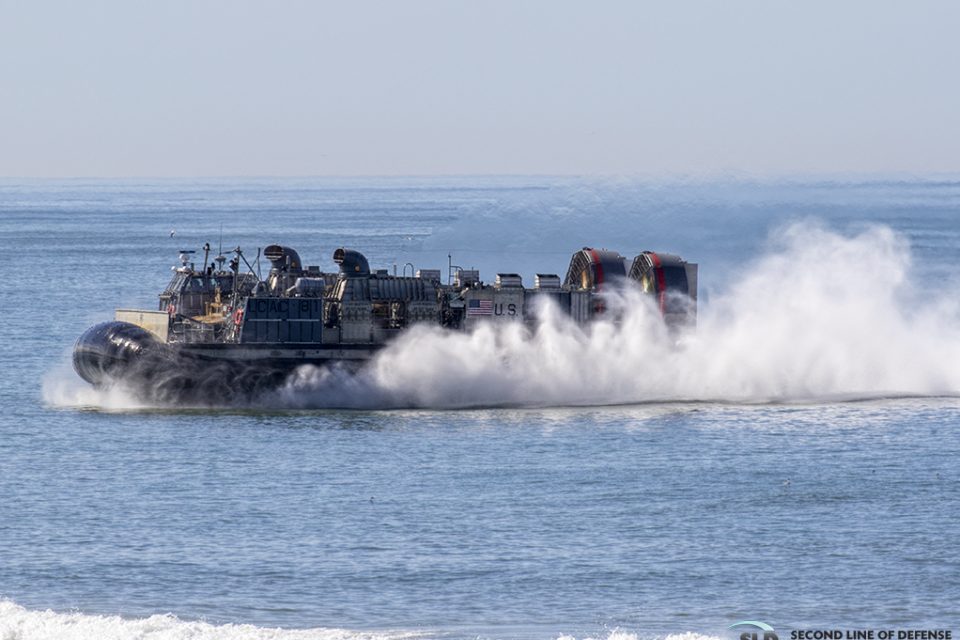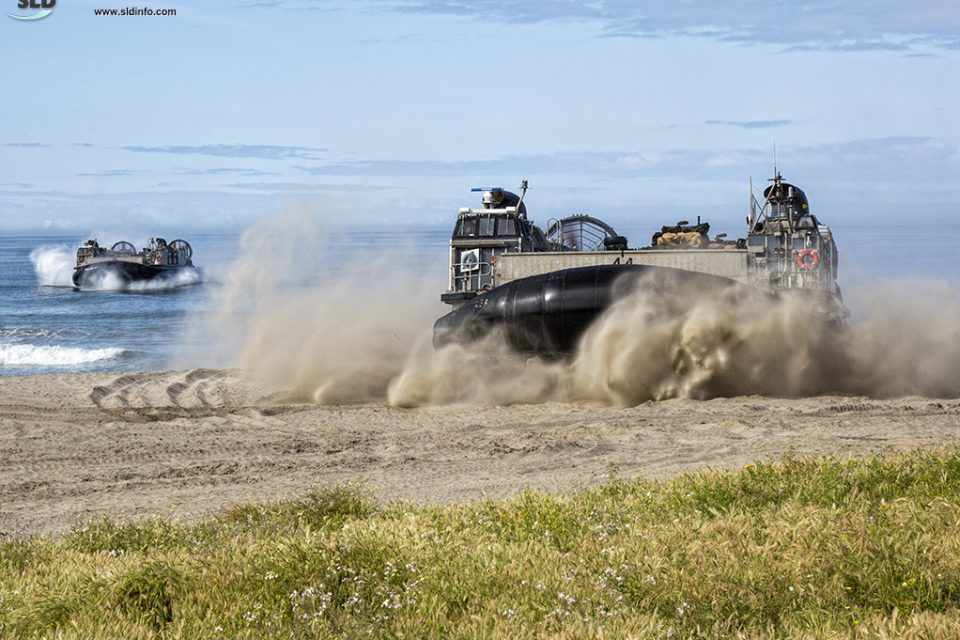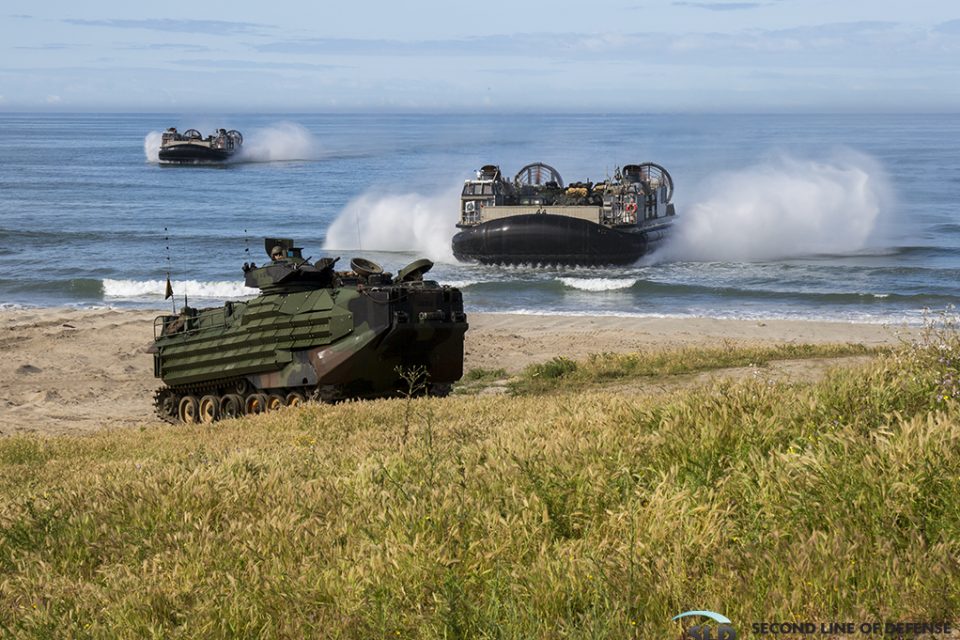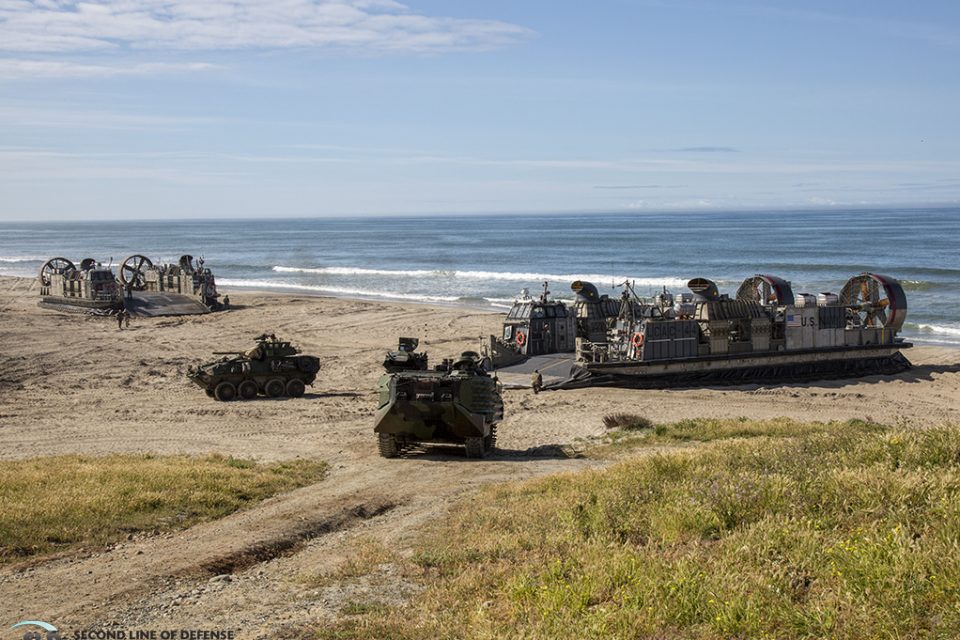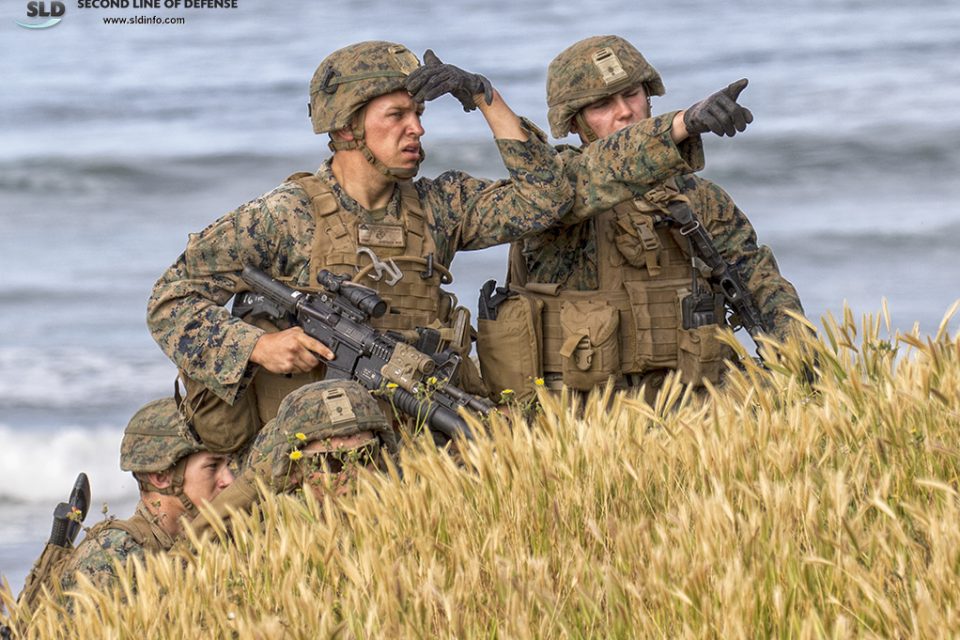05/28/2017: The workup for deployment by a Marine Expeditionary Unit is a phased process of preparation.
The 15th MEU will be the first operational MEU deployed on the USS America, so the ability to use its new capabilities is part of the combat preparation effort.
These photos credited to the USMC provide some snapshots of the MEU preparation to date at sea and on land.
Todd Miller has been following the 15th MEU closely as it prepares for deployment.
2017-04-17 By Todd Miller
On board the U.S.S. San Diego all briefings are complete and mission execution is all that remains.
Marines of the 15th Marine Expeditionary Unit (MEU) gather their steroid induced rucks and pack into the tight confines of the Amphibious Assault Vehicle (AAV). 3 crew, weapons, support equipment and up to 21 Marines in each AAV. It is tight quarters among team.
The smell of diesel fills the air, the clang of metal on metal and slapping of water on the well deck speaks “go time.”
On cue, the ramp, and all hatches of the AAV close tightly and the vehicle is readied for launch.
Launch? Yes, launch into the deep blue sea off the back of the San Diego with as much grace as 29 tons on tracks can muster.
Any apprehension (and there must be some) is masked by focus on the mission at hand.
We are United States Marines, and this is what we do.
This is the defining mission set for Marines. Amphibious Assault. This forcible entry from the sea recalls revered Marine battles of the past; Iwo Jima, Guadalcanal, Okinawa – fought in conditions we cannot know.
Marines immortalized, their qualities of valor and determination to fight through to the finish now awakened in the hearts of this generation of US Marines.
Today’s mission; Gain a beachhead, assault and secure a village with a mixed hostile/civilian population, capture a high value target and secure intelligence.
Location; Red Beach, Camp Pendleton, CA.
The exercise is the culmination of PMINT (PHIBRON – MEU INTegration). The PHIBRON (AmPHIBious SquadRON) consists of the U.S.S. America (LHA-6), U.S.S. San Diego (LPD-22) and U.S.S. Pearl Harbor (LSD- 52), otherwise known as the “America Amphibious Ready Group” (ARG).
The 15th MEU is about 4 months deep in their 6 months of deployment workups.
Previous phases of the workups focused on individual skills followed by unit skills and included exercises such as Realistic Urban Training (RUT) (see previous articles on the 15th MEUs workups Part One & Part Two). PMINT is the stage when the ARG/MEU force integrates as a cohesive team, US Marines and US Navy.
Lt. Col Richard Alvarez, Executive Officer of the 15th MEU explained, “the most challenging thing we do is integrating all the assets, making them work as a team.
Leaving the ship, coming to shore.”
The amphibious assault represents the culmination of PMINT and the transition to the final two months of workups before the ARG/MEU deployment this summer.
The U.S.S. San Diego draws relatively close to shore and the ramp at the rear of the well deck draws down.
Go time.
One after another the AAVs “launch,” almost disappearing in the water before bobbing up to “float height.” Even still, they sit deep in the water ensuring a low profile if targeted. Two waves, one of 5 the other of 6 AAVs are formed. Quick math, and it is clear, hundreds of Marines are incoming.
Overhead the 15th MEUs Aviation Combat Element (ACE) is represented by VMM-161 UH-1Y Venom and AH-1Z Viper helicopters.
The Venom drops its nose making simulated rocket runs on… us. The Vipers gun turret swivels from side to side – pointing at… us. If the battlefield were real, the outcome of those looks – the last record in your memory bank.
It is tempting to jump to the conclusion that a battlefield scenario would include a massive Naval bombardment and airpower strikes – but it is not that simple.
The operational situation would define support levels.
On the table, everything from that Naval bombardment and fierce air attack to soften up the shore – to a stealthy approach in the dead of night.
The full extent of the ACE (not utilized in this specific exercise) provides even more options such as; distributed assault utilizing MV-22Bs where hundreds of Marines can land hundreds of miles inland and CH-53E Super Stallions can sling support equipment to positions of tactical advantage.
As the exercise progresses we see those very MV-22Bs and CH-53Es land in an adjacent area down the beach from the village.
The amphibious assault is just one of 13 mission sets the MEU is “certified” to execute during their deployment.
The forward deployed, rapid responding, broadly capable ARG/MEU provide the combatant commander with incredible flexibility and capability.
Even if not mission utilized, their mere presence offshore sends a strong message of deterrence.
The AAVs approach the shore and move quickly from the waves, to the beach and on to predefined positions flanking the village. Within moments Marines burst from the confines of the AAVs and move forward with purpose under their own notional covering fire. This assault quickly becomes Military Operations on Urbanized Terrain (MOUT), it is dangerous and dynamic.
Marines must carefully assess surroundings, dynamic threats, and make life and death decisions in an instant.
Around any corner, in any number of buildings the Marines confront notional combatants both in uniform and civilian clothing utilizing a variety of weapons. In cases hostiles “play dead” only to open fire as Marines close, or use civilians as human shields.
Throughout the exercise trainers identify issues real time and miss steps or misfortune generate notional Marine injuries that subsequently require team support, medical attention and evacuation.
With the battle raging in the heart of the village “High Speed, Heavy Lifting” Assault Hovercraft -(officially “Landing Craft Air Cushion” vehicles (LCAC)) glide ashore to unload numerous Light Armored Vehicles (LAVs) and High Mobility Multi Wheeled Vehicles (HMMWVs – generally known as Humvees).
Soon, the village is teaming with Marines. AAVs, LAVS, HMMWVs with devastating firepower create a perimeter around the village to defend from counter attack.
Alvarez emphasized that this specific training event mimicked real world scenario, “it puts Marines in a place where they must differentiate and make decisions.”
The workup period is high tempo and relentless. Repeated exposure to intense “real world scenarios” discipline Marines physical and mental skills to respond like muscle memory when on mission.
With PMINT behind them, the final two months of workups remain.
1st Lt. Maida Zheng, Public Affairs Officer of the 15th MEU indicated the next stages as the Composite Training Unit Exercise (COMPTUEX) where the ARG/MEU will exercise assigned mission essential tasks ensuring they are fully prepared for the Certification Exercise (CERTEX).
Upon successful completion of CERTEX, the 15th MEU will be officially certified for their Western Pacific (WESTPAC) / Central Command (CENTCOM) deployment with the America ARG.
Regardless where the ARG/MEU sails and what crises (if any) they are called to confront, Americans can be certain the Marines of the 15th MEU are well prepared and will get the job done.
Second Line of Defense expresses gratitude to; Lt. Col Richard Alvarez, Executive Officer of the 15th MEU; 1st Lt. Maida Zheng, Public Affairs Officer, 15th MEU; BLT 1/5 and the entire 15th MEU; the support team from Marine Corps Base Camp Pendleton, and the U.S.S. America ARG.
Todd Miller focused on the workup and the assets used in the workup, but the evolution of the ARG-MEU which is already underway will see a sea change in capability as new aviation assets are added to the MEU.
As Miller explains:
Given assets and training the MEU is more capable than it has ever been.
Yet the Marines are not standing still, they have a host of new capabilities and assets being adopted or incoming that will bring increased capability and lethality.
LHA America Class of Amphibious Assault Ships; This 2017 deployment with the 15th MEU is the first deployment for the U.S.S. America (LHA-6). This new class of amphibious assault ship replaces the well deck with substantially more space and resources for supporting Marine Aviation operations.
Lt. Col Richard Alvarez, Executive Officer of the 15th MEU explained that “there is no downside impact on the MEU, all the required amphibious assets are located on the U.S.S. San Diego (LPD-22) and U.S.S. Pearl Harbor (LSD- 52).
The upside is the potential to carry more MV-22Bs, CH-53Es, AH-1Zs, UH-1Ys and fixed wing assets, AV-8Bs or in near future, F-35Bs.”
The aviation centric model will provide the ability for “aviation driven amphibious assaults, or military operations” that can take place hundreds of miles inland.
An ideal capability to; Insert; execute missions against terrorist or high value targets; and exfiltrate.
F-35B; The capabilities of the F-35B represent a quantum leap in fixed wing capability for the US Marines.
The F-35B adds organic electronic warfare (EW), integrated command, control, communications, computers, ISR, and the resultant empowered decision making (C4ISR-D) and employment or action (The F-35 and the Future of Power Projection, Laird & Timberlake 2012).
F-35Bs supporting the MEU replace three airframes (EA-6B, F/A-18 & AV-8) and bring the capabilities within the ARG/MEU.
CH-53K; The King Stallion recently realized Milestone C and is approved for low rate initial production (LRIP).
The King Stallion provides up to 3 times the lifting capacity as well as a larger cabin to carry specific loads internally and scores of additional enhancements.
The capabilities open significant operational options moving Marines, artillery and/or equipment from ship to shore.
AAV-SU; The Amphibious Attack Vehicle Survivability Upgrade is underway and provides increased survivability against IEDs, as well as numerous additional upgrades.
RQ-21A; The RQ–21A Blackjack is a small tactical unmanned aircraft system (STUAS) that meets the requirements of the US Navy and the US Marine Corps (USMC).
The RQ-21As standard payload includes an electro-optic imager, mid-wave infrared imager, laser rangefinder, infrared (IR) marker, and automatic identification system (AIS) receivers. Additional payloads are available. *
MAGTF Digital Interoperability (DI); DI positions every platform a sensor, shooter, electronic warfare node and sharer, able to move information throughout the spectrum across the battlefield at light speed. All marine aircraft will be digitally linked with MAGTF and ship C2 across multiple waveforms.*
MAGTF Electronic Warfare (EW); Each platform carries EW payloads to provide persistent, organic and distributed EW & cyber capabilities (such as the Intrepid Tiger II precision EW pod). *
*Information from the 2017 U.S. Marine Corps Aviation Plan


